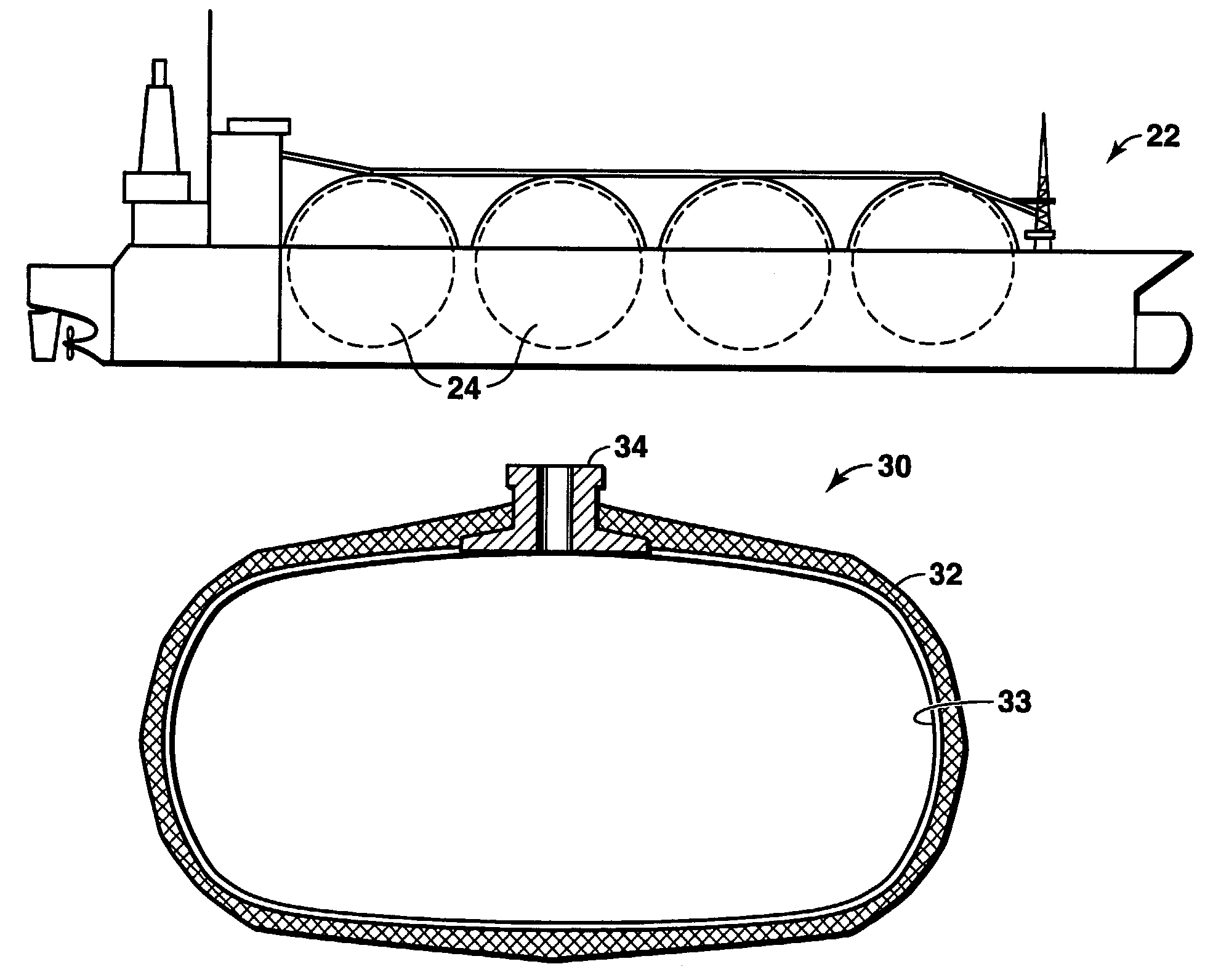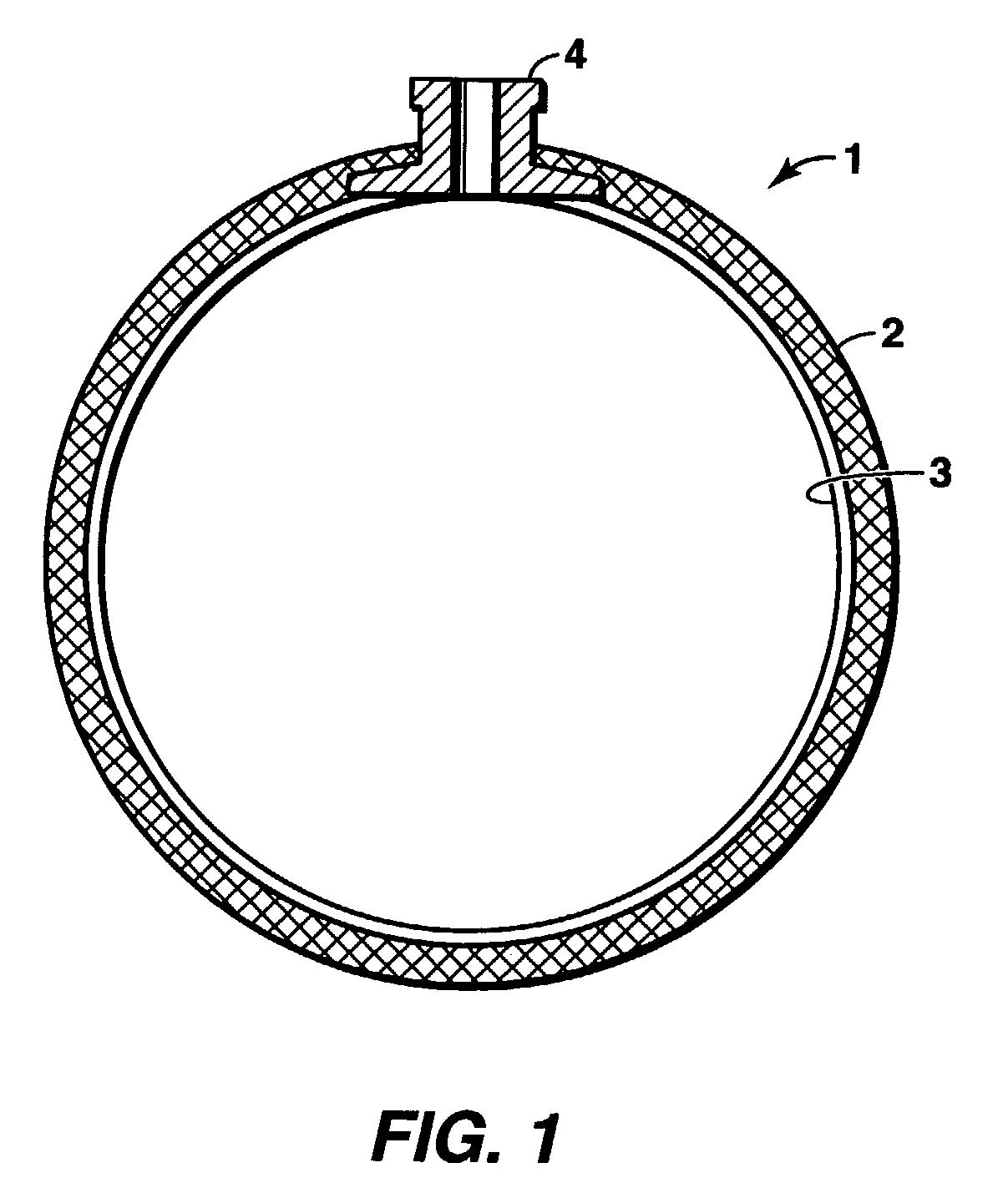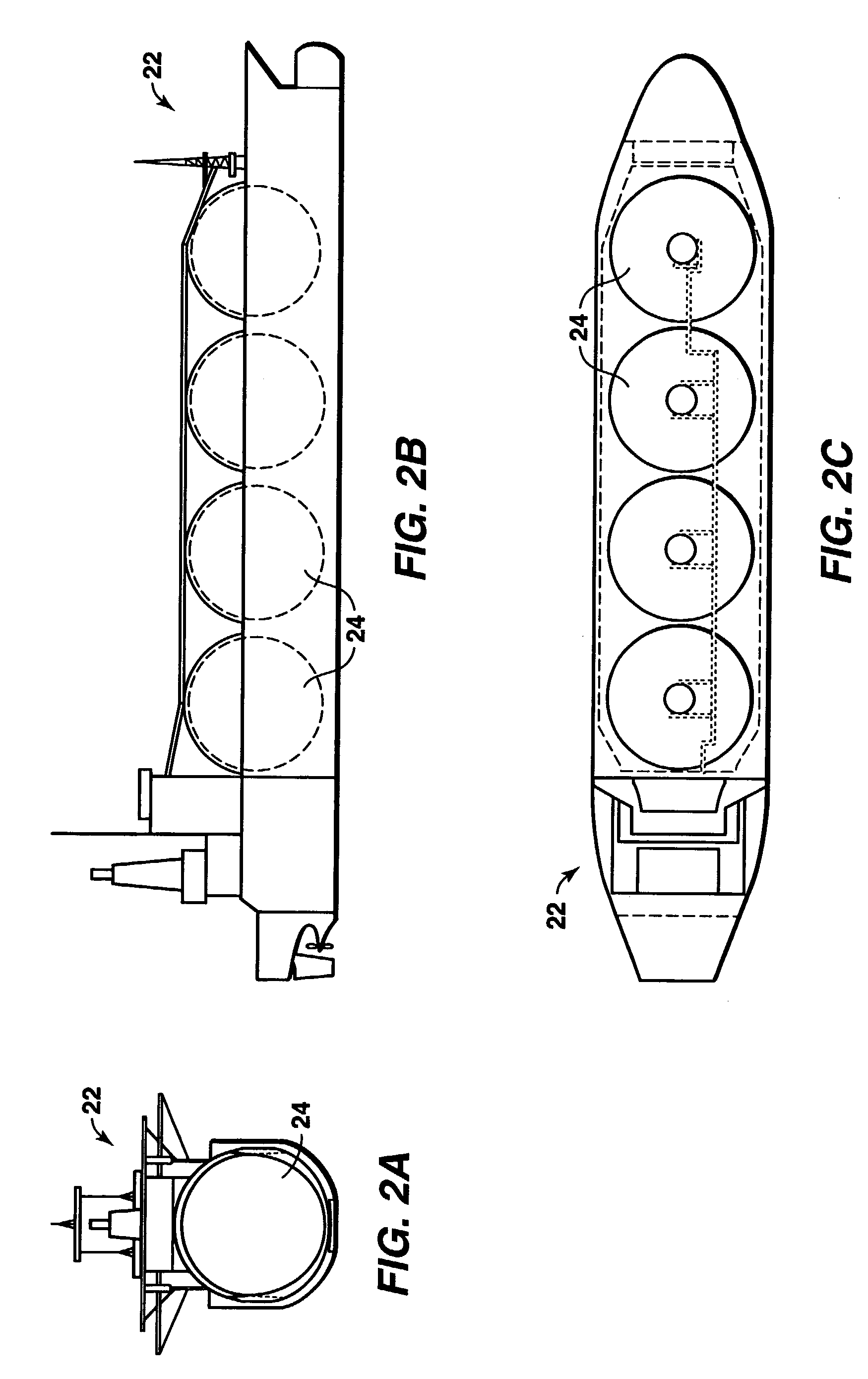Containers and methods for containing pressurized fluids using reinforced fibers and methods for making such containers
a technology of reinforced fibers and containers, applied in the field of containers, can solve the problems of low cargo-carrying capacity performance factor (pf), meaningless use of steels in the plant, and high weight of steel containers, and achieves improved creep performance, good composite compaction, and higher resin fraction
- Summary
- Abstract
- Description
- Claims
- Application Information
AI Technical Summary
Benefits of technology
Problems solved by technology
Method used
Image
Examples
Embodiment Construction
Composite Overwrap
[0042]The composite overwrap in a container according to this invention preferably provides the primary structural support for the operating loads. The composite overwrap is preferably a material system comprising high-performance fibers in a resin matrix capable of cryogenic temperature service. As used herein “cryogenic temperature” means any temperature of about −62° C. (−80° F.) and colder. An example of such a resin is the CTD 525 epoxy cryogenic resin. Two classes of material systems have been designed for this invention.
[0043]The first class of material systems comprises: (i) a high performance fiber, preferably selected from the following fibers (carbon, glass, kevlar®, aramid, UHMWP); and (ii) a thermo-setting resin (such as the CTD-525 epoxy cryogenic resin). One embodiment uses high-performance carbon fiber such as TORAY T-700, GRAFIL 34-600 or ZOLTEK PANEX 35 for better creep performance. This first class of material system is characterized by a constan...
PUM
| Property | Measurement | Unit |
|---|---|---|
| temperature | aaaaa | aaaaa |
| pressure | aaaaa | aaaaa |
| temperatures | aaaaa | aaaaa |
Abstract
Description
Claims
Application Information
 Login to View More
Login to View More - R&D
- Intellectual Property
- Life Sciences
- Materials
- Tech Scout
- Unparalleled Data Quality
- Higher Quality Content
- 60% Fewer Hallucinations
Browse by: Latest US Patents, China's latest patents, Technical Efficacy Thesaurus, Application Domain, Technology Topic, Popular Technical Reports.
© 2025 PatSnap. All rights reserved.Legal|Privacy policy|Modern Slavery Act Transparency Statement|Sitemap|About US| Contact US: help@patsnap.com



